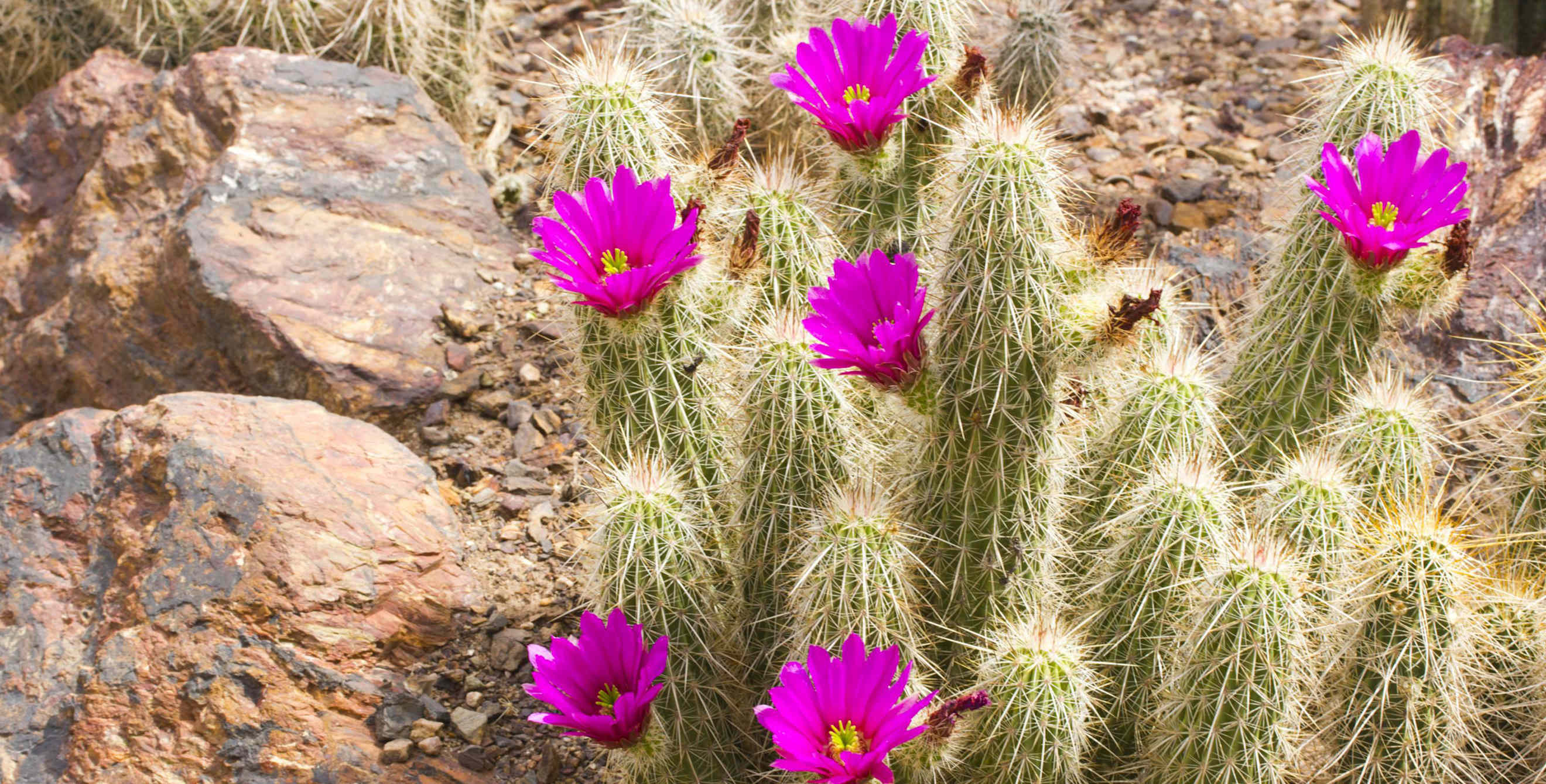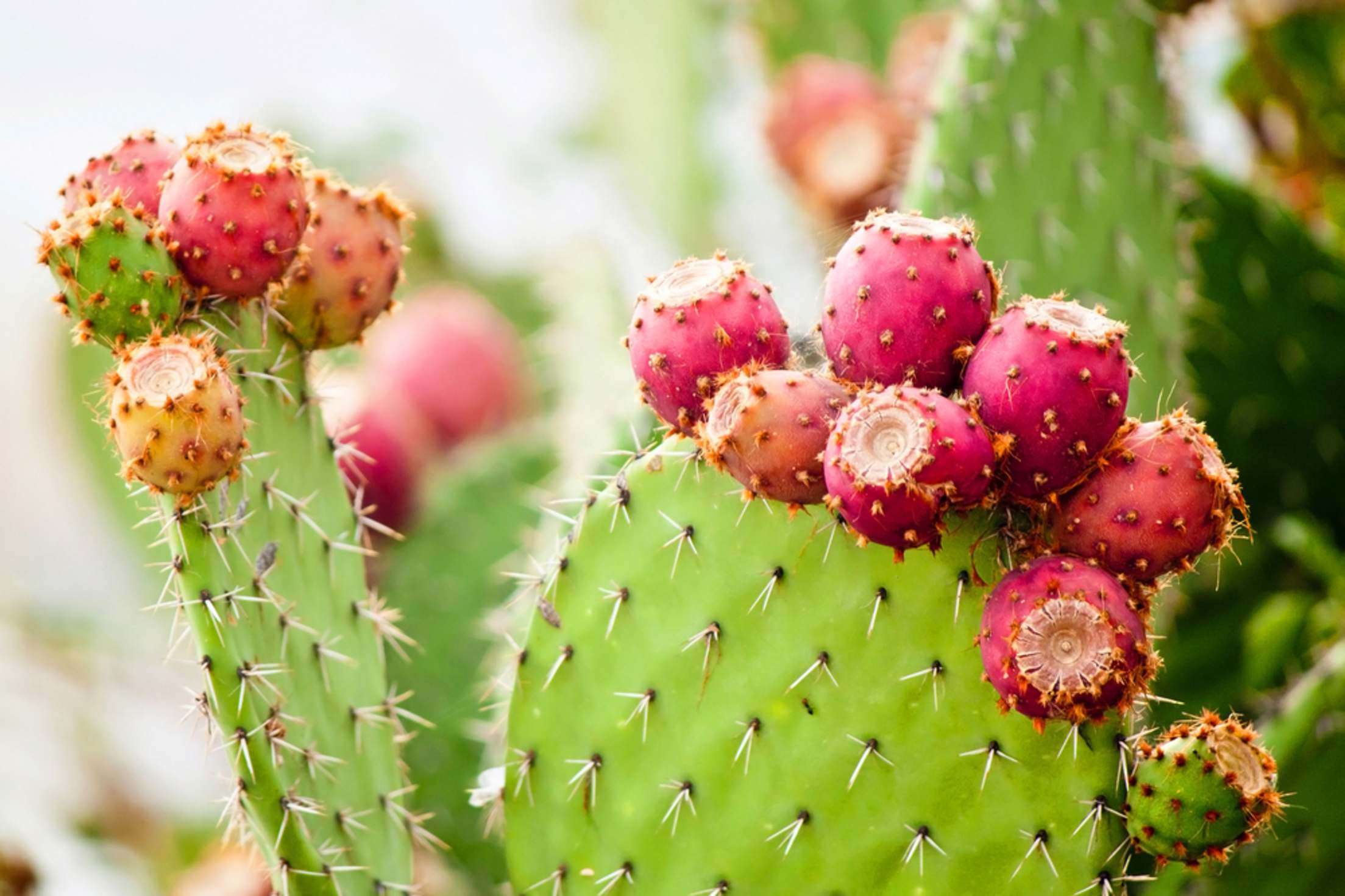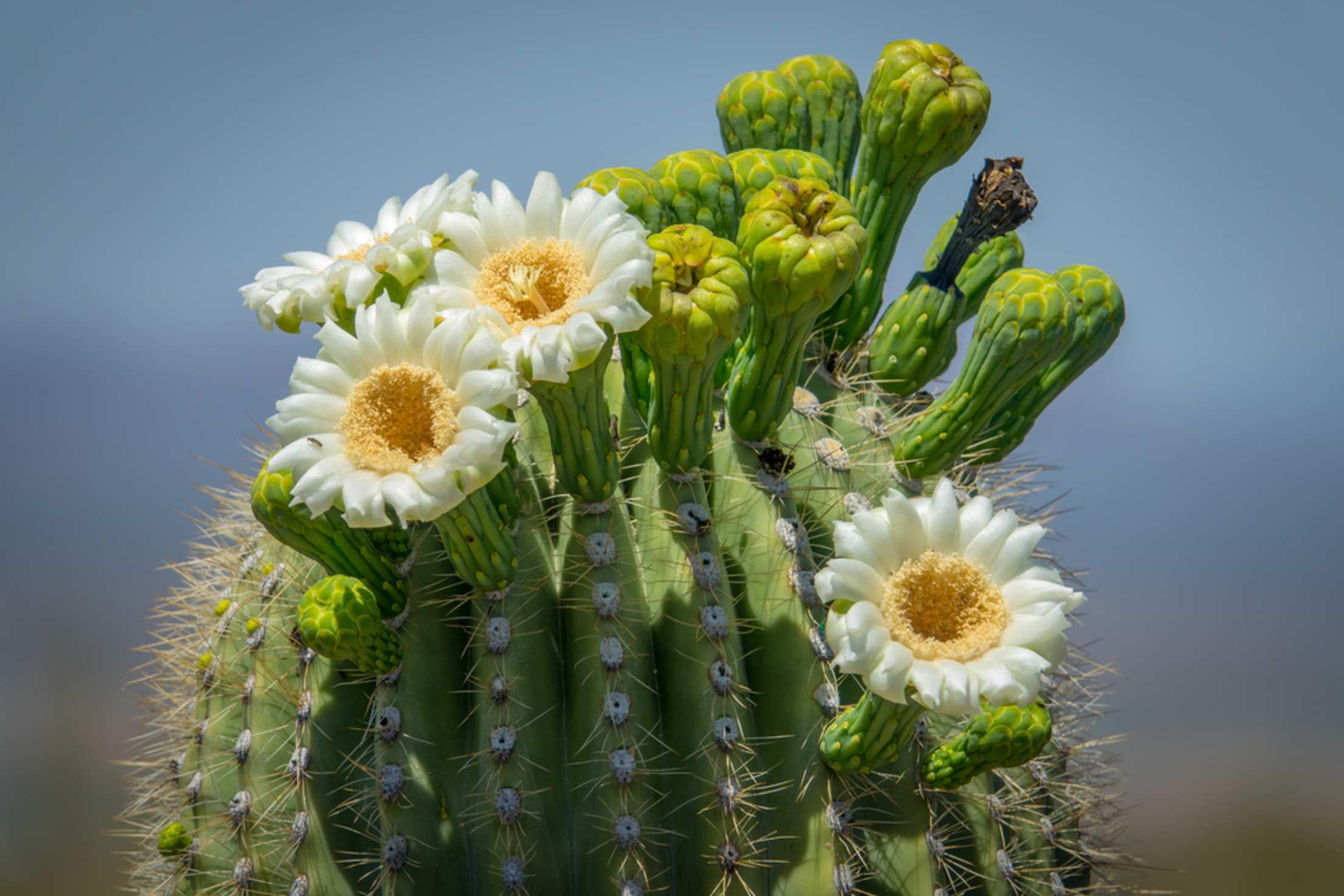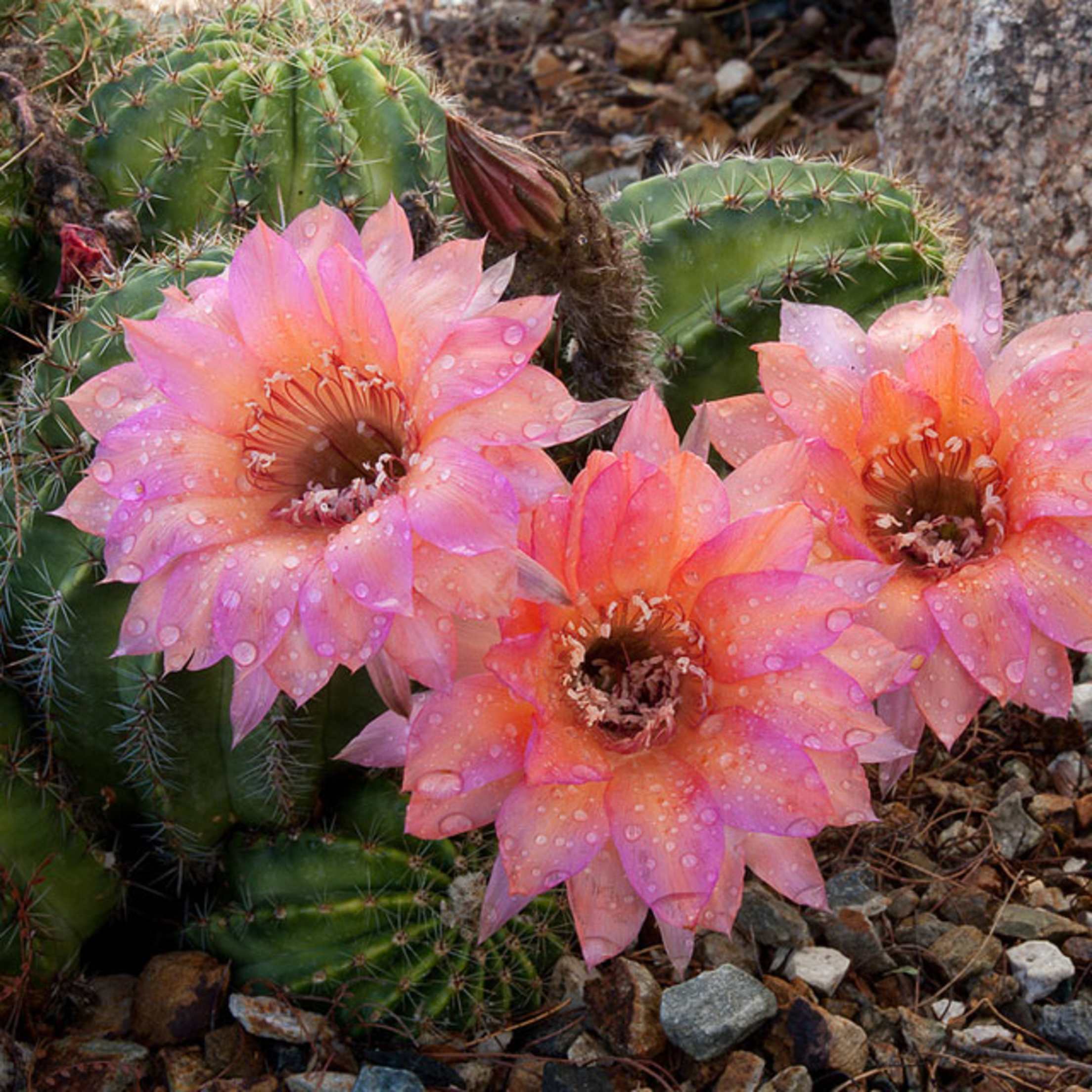
Where to Find Saguaros and Other Dazzling Cactus in the West
Catch vibrant blooms and peak at famous desert inhabitants in California and Arizona.

Is there a plant so grotesque yet so gorgeous, so reviled yet so revered as the cactus? Take the creeping devil cactus, which could have slithered out of a ’50s horror flick. Or the fearsome horse crippler. Or the much-maligned barrel cactus, to author Edward Abbey “that bloated monster of a vegetable” and to crude jokesters “the mother-in-law’s seat.”
But for every cactus that offends, another delights: the queen of the night, which unfurls velvety white petals on a midsummer’s eve; the fishhook cactus, which wears a garland of bright blossoms; and the organ-pipe cactus, whose arms beseech heaven.
Cacti symbolize the Southwest, but members of this adaptable plant family of 2,500 species also grow far from the land of lonesome cowboys and sun-bleached bovine skulls. Within sight of breaching orcas, you can poke yourself on a native brittle cactus on Washington’s Whidbey Island. In Montana, it wasn’t just grizzlies and rattlesnakes that tormented Lewis and Clark—a low-lying prickly pear tore their moccasins. And watch your step on the east slope of California’s Sierra Nevada; cacti thrive as high as 9,000 feet.
Cactus spines act mainly as armor against hungry animals. Yet these slim daggers also help the plant retain a bit of warmth on winter nights and protect it against ultraviolet rays on sunny days. As the camels of the plant world, cacti can be 95 percent water, endure air temperatures of 138°F, and survive years without a drink. Botanist Luther Burbank wrote of a cactus, uprooted and left hanging from a tree for six years, that threw off new stems and flowers after it was stuck in the ground.
Whether you’re a veteran cactophile or a new fan of prickly plants, consider a flowering-season trip to a park or garden where native cacti abound. Bring a hat, sunscreen, and a comb—a tried-and-true tool for lifting spines off an ankle or sleeve.

The prickly pear cactus, in the genus Opuntia, appears to grow prickly Ping-Pong paddles.
Anza-Borrego Desert State Park, Eastern San Diego County, California
California’s largest state park is a land of biblical harshness and bountiful beauty. Sandy washes and rocky slopes can be so dry one week that a thirsty big-horn sheep will head-butt a barrel cactus for its pulp, yet the next week the land may explode with color.
Although the park’s famed wildflowers need the right mix of water, wind, sun, and heat, its 16 native cactus species are less fickle. Even after a winter with too little rain to fill a teacup, cacti can produce showy displays. Blooms arrive later than those of annuals—April is a good bet. Look for fishhook cacti wearing bridesmaids' wreaths of yellow flowers or a prickly pear with magenta flowers.

White saguaro blooms.
Saguaro National Park, Tucson, Arizona
Amid the gathering heat of a spring morning, there’s a stillness here in the Sonoran Desert of southern Arizona. But much is going on. White-winged doves sip nectar from the creamy flowers of the mighty saguaro cactus. A Gambel’s quail scurries under a creosote bush, chicks in tow. In a saguaro cavity excavated by a nesting woodpecker, an elf owl settles in for a good day’s sleep.
Twenty-five cactus species live in the 91,000-acre Saguaro National Park. But the saguaro is king. The country’s largest cactus is beloved for its anthropomorphic arms: raised skyward in surrender, outstretched like a priest’s welcoming the flock to Mass, or crossed like those of the Scarecrow giving directions. Its trumpet-shaped flowers bloom late April through June on the arms’ tips, as if the cactus were proffering bouquets.
Saguaros can grow five stories tall, live for 200 years, and weigh eight tons. They are not to be messed with. Most Arizonans have heard of the young marksman killed by a toppled arm while using a saguaro for target practice. Despite civilization’s inroads, the saguaro seems to be thriving. Up to 1.8 million live in the national park; many more populate nearby Organ Pipe Cactus National Monument.

The flying saucer cactus' pink blooms dot the Desert Botanical Garden in Phoenix, Arizona.
Desert Botanical Garden, Phoenix, Arizona
Come sunset, it’s romance time in this garden. The queen of the night cactus perfumes the air with a heady scent while the flying saucer cactus shows off pink petals. The flirting is all to lure winged pollinators who linger for the nectar and leave with proboscises full of pollen. “There’s not a lot of wildlife in the desert, so flowers have to look brilliant and smell really good,” says cacti collections manager Scott McMahon.
With 50 cultivated acres, the garden holds a spectacular array of over 15,000 cactus plants, centered on plants of the Southwest and unusual species. Check out the Galápagos prickly pear, which appears to grow whiskered Ping-Pong paddles. Walk the trails to discover early uses for the cactus and visit “galleries” where cacti pose as objets d’art.
Joshua Tree National Park, Twentynine Palms, California
This desert park is popular for its peculiarities: the twisted limbs of the Joshua tree, granite boulders as big as houses and rounded like ice cubes, and a chest-high cactus that looks like a huggable stuffed animal. Don’t be fooled. The teddy bear cholla—one of 15 cactus species here—wears barbed spines that seem to leap out and impale passersby. “We've pulled a lot of them out with pliers,” says former ranger Pat Pilcher.
Victims shouldn’t take it personally. This “jumping cholla” is just trying to procreate. Bits of limbs latch onto passing animals, clinging until they drop off and sprout. Among the cholla limbs, you might spy the nest of a cactus wren, for whom the spines mean 24-hour security.